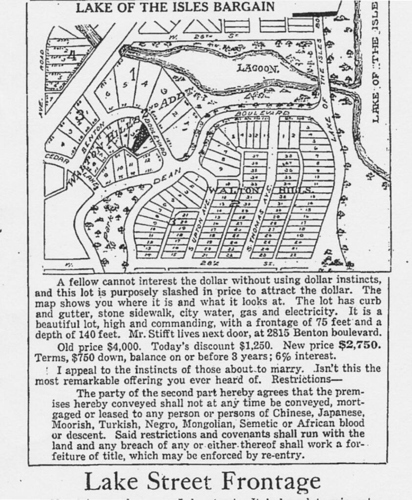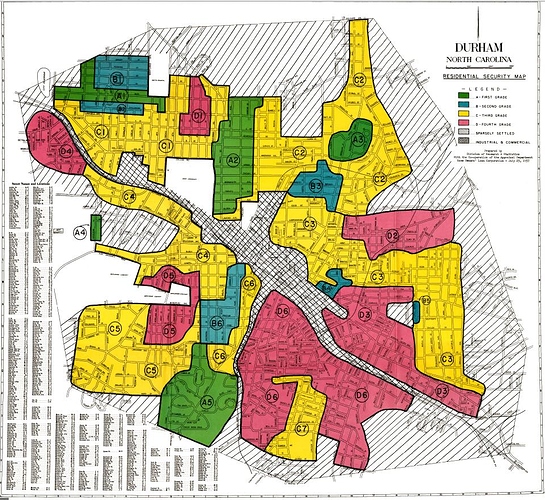you do know that most of the “African american” neighborhoods (not all) were white before they were black so how can you claim they are somehow “owned” by black people?
Most black neighborhoods nationwide became black neighborhoods because of explicitly racist policy, not because black people moved there by choice. When black people began moving into neighborhoods, white folks fled because they did not want to live in the same neighborhoods as minorities. See the history of white flight and the practice of blockbusting.
This is the crucial distinction you are not making – never in the history of America have white people been unable to buy property anywhere they’ve wanted specifically because of their race. Meanwhile, people of color have faced institutional barriers throughout most of this country’s history that led to segregated neighborhoods. Racial covenants were extremely common around the country, for example the below images of deeds in Minneapolis that explicitly mandated that nonwhite people could not live in those premises.

And while these became illegal about 70 years ago, racial covenants were only one small part of the whole – New Deal-era government supported the system of covenants, giving neighborhoods with racial restrictions the best credit ratings, and areas in which people of color were forced to reside worse ones, enacting barriers against lending and home ownership in those neighborhoods. This practice of Redlining had a huge part in shaping the racial makeup of neighborhoods locally; see the below map of Durham’s redlined neighborhoods (which, by the way – has a strong correlation to neighborhoods that were decimated by urban renewal, and many other metrics of inequity, even down to the percentage of tree cover that exists in redlined neighborhoods today).
Admittedly, I do not know much about Raleigh’s history in this regard, but the below quote makes some interesting observations about how segregation manifested in Raleigh.
while there was no redlining in Raleigh (per se), the city found ways to concentrate its nonwhite, non-wealthy citizens—e.g., by locating the segregated Black schools near a quarry and a landfill and declaring that Black students wouldn’t be bussed elsewhere. Until the late sixties, many Black residents were denied access to mortgages. Investors bought single-family homes in Black neighborhoods and split them into multiple units to make more money. By the nineties, these neighborhoods were among the only places in town that would accept Section 8 vouchers or rent to people with poor credit or who had been previously jailed.
So, when we talk about gentrification, it is not from the perspective of wanting to continue racial segregation. Absolutely not. What people want is a recognition of this history, an awareness from the perspective that none of this happened in a vacuum. And while gentrification will always occur within the current market system, if we remain aware of this history, we can advocate for policy that aims to counteract some of the displacement of populations that have been historically marginalized.
To enact legislation for centuries that prevented minorities from living anywhere but these neighborhoods, to neglect investment in these same neighborhoods for decades when they were deemed undesirable because they were inhabited by minorities, and to then suggest that we are suddenly NOW making this a racial issue when it has always been one is not only unjust, but also ahistorical.

